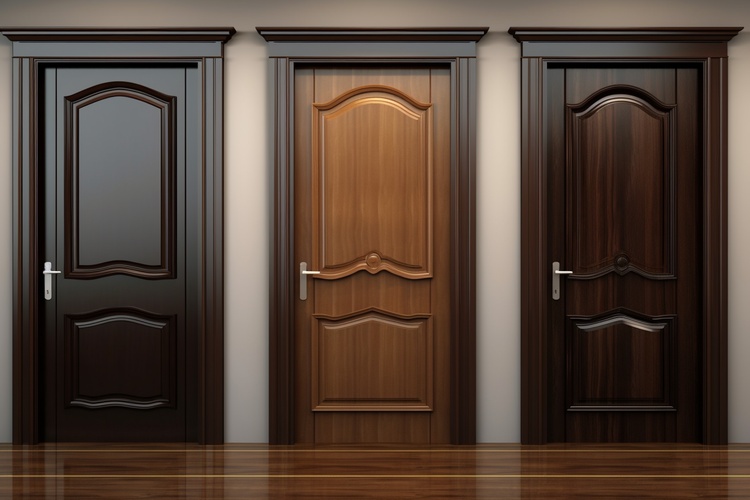Choosing the Perfect Exterior Front Door: A Comprehensive Guide
Your home's exterior front door serves as both a functional entry point and a key design element that sets the tone for your entire property. Selecting the right door involves considering various factors, from style and materials to security and energy efficiency. This guide will walk you through the essential aspects of choosing an exterior front door that meets your needs and enhances your home's curb appeal.

What are the key factors to consider when choosing a front door?
When selecting an exterior front door, several crucial factors come into play. First, consider the overall architectural style of your home to ensure the door complements its design. The door’s material is another vital aspect, as it affects durability, maintenance requirements, and insulation properties. Security features, such as reinforced frames and advanced locking systems, should also be prioritized. Additionally, energy efficiency is an important consideration, especially in regions with extreme temperatures. Finally, your budget will play a significant role in determining the range of options available to you.
What design styles are common in modern front doors?
Modern front doors often feature clean lines, minimalist designs, and contemporary materials. Sleek, flush doors with minimal ornamentation are popular choices for modern homes. Large glass panels or narrow vertical windows are frequently incorporated to allow natural light into the entryway. Materials like fiberglass, aluminum, and steel are often used in modern door designs due to their durability and low maintenance requirements. Many modern doors also feature unique hardware, such as oversized handles or hidden electronic locks, adding to their cutting-edge appearance.
How do traditional front door designs differ from modern styles?
Traditional front door designs typically showcase more ornate and detailed elements compared to their modern counterparts. These doors often feature raised panels, decorative glass inserts, and intricate moldings. Wood is a popular material for traditional doors, with options like oak, mahogany, and cherry being common choices. Transom windows and sidelights frequently accompany traditional doors, adding elegance and allowing more light into the entryway. Hardware on traditional doors tends to be more elaborate, with options like vintage-inspired doorknobs, knockers, and mail slots enhancing the classic aesthetic.
What materials are commonly used in exterior front door construction?
Several materials are commonly used in the construction of exterior front doors, each with its own set of advantages:
-
Wood: Offers a classic, warm appearance and can be customized easily. However, it requires regular maintenance and may be susceptible to warping or rotting.
-
Fiberglass: Provides excellent durability, energy efficiency, and low maintenance. It can be manufactured to mimic the look of wood.
-
Steel: Known for its strength and security, steel doors are also energy-efficient and relatively low-maintenance.
-
Aluminum: Lightweight and corrosion-resistant, aluminum doors are a good choice for coastal areas but may not provide as much insulation as other materials.
-
Composite: Made from a combination of materials, composite doors offer durability, energy efficiency, and can mimic the appearance of wood.
How do exterior front doors vary in terms of security features?
Exterior front doors can vary significantly in terms of security features. Basic doors may have simple deadbolts and standard locks, while more advanced options incorporate multi-point locking systems, reinforced frames, and impact-resistant glass. Some high-security doors feature steel cores or reinforced edges to prevent forced entry. Smart locks and electronic access systems are becoming increasingly popular, allowing homeowners to control and monitor access remotely. Additionally, peepholes or video doorbells can enhance security by allowing occupants to see visitors before opening the door.
What should you know about front door insulation and energy efficiency?
The insulation properties of your front door can significantly impact your home’s energy efficiency. Doors with poor insulation can lead to drafts and increased energy costs. Look for doors with high R-values, which indicate better insulation performance. Energy Star certified doors meet strict energy efficiency guidelines set by the U.S. Environmental Protection Agency and the Department of Energy. These doors often feature weatherstripping, tight-fitting frames, and insulated cores to minimize heat transfer. For doors with glass elements, look for double or triple-paned glass with low-emissivity coatings to improve energy efficiency while still allowing natural light to enter.
When selecting an exterior front door, consider all these factors to find a balance between style, security, and energy efficiency that suits your home and lifestyle. By carefully evaluating your options and understanding the various features available, you can choose a front door that not only enhances your home’s appearance but also provides the functionality and performance you need.




